From Start to Finish: The Process of Making Ceramics
Creating ceramics is an enchanting journey that intertwines artistry, science, and tradition. From the moment you gather your raw materials to the final reveal of your masterpiece, each step is filled with creativity and discovery. Imagine the transformation of simple clay into beautiful pottery that can be both functional and decorative. This ancient art form is not just about making objects; it's about expressing oneself through the medium of earth and fire. In this article, we will explore the intricate journey of ceramics, detailing each step from raw materials to the final product, and the techniques involved in this captivating craft.
The foundation of ceramics lies in its raw materials. The primary ingredient is clay, but not all clays are created equal. There are various types of clay, each with its own unique properties that influence the final product. For instance, earthenware is known for its porous nature and is often used for decorative pieces, while stoneware is more durable and suitable for functional items like dishes and mugs. Additionally, potters often add additives such as grog (pre-fired clay) to enhance texture and reduce shrinkage during firing.
Here’s a quick overview of some common types of clay:
| Type of Clay | Characteristics | Common Uses |
|---|---|---|
| Earthenware | Low firing temperature, porous | Decorative pottery |
| Stoneware | Durable, medium firing temperature | Dishes, mugs |
| Porcelain | High firing temperature, translucent | Fine dinnerware, art pieces |
Shaping ceramics involves various techniques that can define the piece's aesthetics and functionality. Each method offers unique possibilities and challenges. Whether you prefer the tactile experience of hand-building or the precision of wheel-throwing, the choice of technique can significantly influence your final creation.
Hand-building is a versatile technique that allows for creativity and individuality. This method is perfect for those who enjoy working closely with their materials. Artisans can create unique forms by hand, making each piece truly one-of-a-kind. The three primary hand-building techniques include pinch pots, coil building, and slab construction.
Pinch pots are simple yet effective, allowing beginners to explore ceramic shaping. The process involves taking a ball of clay and using your fingers to pinch and shape it into a bowl or vessel. This technique is not only easy to learn but also encourages creativity, as you can experiment with different shapes and sizes. With a little practice, you can create functional and decorative pinch pots that are perfect for holding small items or simply as artwork.
Coil building is a traditional method that enables the creation of larger and more complex forms. By rolling out long strands of clay and stacking them to form the desired shape, potters can create everything from vases to intricate sculptures. This technique requires patience and practice, but the results can be stunning. Tips for achieving successful results include keeping the coils moist and blending the joints to create a seamless finish.
Wheel-throwing is a dynamic and skillful method used by many potters. The potter's wheel allows for precise shaping and forms, making it a favorite among those looking to create uniform pieces. The basics of using a potter's wheel include centering the clay and shaping it into vessels. Mastering this technique takes time and practice, but the satisfaction of creating a perfectly symmetrical bowl or mug is well worth the effort.
Firing is a crucial step in ceramic production, transforming raw clay into durable pottery. This process involves heating the clay in a kiln at high temperatures, which causes physical and chemical changes in the material. There are two main firing techniques: bisque firing and glaze firing, each playing a vital role in the final outcome of the piece.
Bisque firing is the initial firing that hardens the clay, making it easier to handle and ready for glazing. This stage is essential as it prepares ceramics for the subsequent glazing process, ensuring that the piece can withstand the heat of the glaze firing. During this stage, the clay undergoes a transformation, becoming more robust and less porous.
Glaze firing adds color and a glassy finish to ceramics. This process involves applying a layer of glaze to the bisque-fired piece and firing it again at high temperatures. The type of glaze used, along with the firing temperature, can dramatically affect the appearance and texture of the final product. There are numerous types of glazes available, each offering different finishes, from matte to glossy.
After firing, ceramics often require finishing touches to enhance their beauty and functionality. Techniques such as polishing, decorating, and applying additional glazes are commonly used to achieve the desired look. These finishing processes not only improve the aesthetics of the piece but also can add functionality, such as making a surface more durable or easier to clean.
Creating ceramics comes with its own set of challenges. Common issues include cracking, warping, and glazing problems. However, with experience and careful attention, many of these challenges can be overcome. For instance, ensuring that the clay is evenly moist and not overly dry can help prevent cracks during drying and firing. Additionally, understanding the properties of different clays and glazes can aid in troubleshooting these issues effectively.
Ceramics is not just functional; it’s also an art form. The diversity in ceramic art is astonishing, encompassing various styles such as sculpture, pottery, and decorative ceramics. Artists often blend techniques and materials to create unique pieces that tell a story or convey a message. This exploration of ceramic art forms highlights the endless possibilities within this medium.
As technology advances, so does the field of ceramics. Emerging trends such as 3D printing and innovative glazing techniques are pushing the boundaries of traditional ceramic practices. Contemporary artists are experimenting with new materials and methods, leading to exciting developments in the world of ceramics. The future promises to be bright for this ancient art form, as it continues to evolve and inspire.
- What is the best type of clay for beginners? Earthenware is often recommended for beginners due to its workability and low firing temperature.
- How long does it take to make ceramics? The process can take anywhere from a few days to several weeks, depending on the complexity of the piece and drying times.
- Can I use my ceramics in the microwave? It depends on the type of clay and glaze used. Always check for microwave-safe labels.

Understanding Raw Materials
The foundation of ceramics lies in its raw materials, which are crucial for determining the quality and characteristics of the final product. At its core, ceramics primarily consist of clay, but there’s much more to it than just that. Different types of clay, along with various additives and minerals, play a significant role in shaping the final piece. Let’s dive deeper into these essential components.
First off, the most commonly used clays in ceramics include earthenware, stoneware, and porcelain. Each type has its unique properties:
| Type of Clay | Characteristics | Common Uses |
|---|---|---|
| Earthenware | Low firing temperature, porous, often reddish-brown | Flower pots, tiles, decorative items |
| Stoneware | Durable, non-porous, high firing temperature | Dinnerware, cookware, functional pottery |
| Porcelain | Very fine, translucent, high firing temperature | Fine china, artistic sculptures, high-quality dinnerware |
Understanding these types of clay is essential for any ceramic artist, as they influence everything from the durability of the piece to its aesthetic appeal. For instance, if you want to create something that can withstand daily use, stoneware is an excellent choice. On the other hand, if you're looking to craft intricate decorative pieces, porcelain might be your best bet.
In addition to clay, additives such as grog (pre-fired clay that is ground into granules), fluxes, and colorants are often mixed in to enhance certain properties. Grog, for example, helps reduce shrinkage and cracking during the drying and firing processes. Fluxes lower the melting point of the clay, allowing for smoother glazing, and colorants can be added to achieve that perfect hue or finish. These materials can significantly alter the final product, providing artists with a plethora of options to experiment with.
Moreover, minerals such as feldspar, kaolin, and silica are equally important. Each mineral contributes specific qualities to the clay body:
- Feldspar: Acts as a flux, helping to form a glassy surface when fired.
- Kaolin: A primary ingredient in porcelain, known for its whiteness and purity.
- Silica: Provides strength and stability, making it essential for high-fire clays.
So, next time you're admiring a beautifully crafted ceramic piece, remember that it all starts with a careful selection of raw materials. The journey from clay to a finished product is a complex interplay of science and art, where each component plays a pivotal role. Understanding these materials not only enhances the quality of the work but also enriches the creative process itself.

Shaping Techniques
Shaping ceramics is where the magic truly begins, transforming humble lumps of clay into stunning works of art. Whether you're a novice or a seasoned artisan, the techniques you choose to shape your ceramics can profoundly influence the final product's aesthetics and functionality. The world of ceramic shaping is diverse, featuring methods that cater to different skill levels and artistic visions. From the tactile joy of hand-building to the rhythmic precision of wheel-throwing, each technique offers unique possibilities and challenges. Let's delve deeper into these shaping methods, exploring how they can bring your creative ideas to life.
One of the most appealing aspects of ceramic shaping is the variety of techniques available. Each method not only affects the physical form of the piece but also adds a layer of personal expression. Here’s a brief overview of some popular shaping techniques:
- Hand-Building: This technique is all about using your hands to create unique forms. It includes methods like pinch pots, coil building, and slab construction. Perfect for those who enjoy a tactile approach!
- Wheel-Throwing: A dynamic and skillful method that requires a potter's wheel. It involves centering the clay and shaping it into symmetrical forms, ideal for creating bowls, vases, and more.
- Molding: This involves using pre-made molds to shape the clay. It can be a quicker option for producing consistent shapes, suitable for both functional and decorative items.
Each of these techniques can be explored in-depth, allowing you to find the one that resonates with your artistic style. For example, hand-building is a fantastic way to express creativity, as it allows for imperfections and individuality in each piece. On the other hand, wheel-throwing offers a sense of satisfaction as you master the art of creating perfectly symmetrical vessels.
Hand-building techniques, such as pinch pots, coil building, and slab construction, emphasize creativity and personal touch. Pinch pots, for instance, are a great starting point for beginners. They involve simply pinching the clay into a desired shape, making it incredibly accessible. Coil building, on the other hand, allows for more complex forms, where long coils of clay are stacked and blended to create larger pieces. This method can lead to intricate designs and larger sculptures, showcasing the artist's skill and vision.
In contrast, wheel-throwing is a technique that many potters gravitate toward for its precision and speed. Using a potter's wheel, you can quickly shape the clay into perfectly round forms. This method requires practice and patience, as centering the clay is crucial for achieving symmetry. Once you get the hang of it, the feeling of pulling up the walls of a pot can be exhilarating, almost like dancing with the clay!
In summary, the shaping techniques you choose can significantly impact your ceramic creations. Whether you prefer the personal touch of hand-building or the precision of wheel-throwing, each method offers a unique way to express your artistic vision. So, grab some clay, and let your imagination run wild!

Hand-Building Methods
Hand-building is a captivating and versatile technique that allows artists to explore their creativity while shaping their unique ceramic pieces. Unlike wheel-throwing, which requires a potter's wheel, hand-building offers the freedom to create forms without the constraints of machinery. This method is perfect for beginners and seasoned artisans alike, as it encourages experimentation and personal expression. Think of it as sculpting with clay—each pinch, coil, and slab tells a story, reflecting the artist's vision and style.
There are three primary hand-building techniques: pinch pots, coil building, and slab construction. Each of these methods has its own charm and challenges, allowing for a wide range of artistic possibilities. Let's dive deeper into these techniques to see how they can shape your ceramic creations.
Pinch pots are the quintessential starting point for those new to ceramics. The technique is as simple as it sounds: you take a ball of clay and pinch it into shape, creating a vessel that can be functional or decorative. This method is not only easy to learn but also incredibly forgiving, making it perfect for beginners. With just a few basic steps, you can create your own pinch pot:
- Start with a small ball of clay, about the size of a golf ball.
- Use your thumb to make an indentation in the center.
- Gradually pinch the walls of the pot, rotating it as you go to maintain an even thickness.
- Once you achieve your desired shape, you can smooth the surface or add decorative elements.
Pinch pots can be transformed into various forms, from simple bowls to intricate sculptures, showcasing the artist's creativity and skill.
Coil building takes hand-building to the next level, allowing you to create larger and more complex forms. This traditional method involves rolling out long snakes or coils of clay and stacking them to build up your piece. The beauty of coil building lies in its adaptability; you can create anything from pots to sculptures with this technique. Here’s how you can get started:
- Begin by rolling out coils of clay, ensuring they are of uniform thickness.
- Start stacking the coils on top of each other, gently blending the seams to create a solid structure.
- Use tools or your fingers to shape and refine the form as you build.
Coil building not only allows for creativity but also teaches you about the properties of clay and how to manipulate it effectively. It's a fantastic way to create unique shapes that might be challenging to achieve with other methods.
Slab construction is another hand-building technique that involves rolling out flat pieces of clay, or slabs, and assembling them to create forms. This method is particularly useful for making geometric shapes, boxes, and tiles. The process is straightforward, yet it offers endless possibilities for design. Here’s a brief overview of how to get started:
- Roll out your clay into even slabs using a rolling pin or slab roller.
- Cut the slabs into the desired shapes with a knife or clay cutter.
- Join the slabs together using slip (a mixture of clay and water) to create your structure.
Slab construction allows for intricate designs and can be enhanced with texture, patterns, or even painted finishes, making it a favorite among many ceramic artists.
In conclusion, hand-building methods are a gateway to the world of ceramics, offering a hands-on approach to creating art. Whether you choose to pinch, coil, or slab, each technique has its own unique charm and can lead to stunning results. So grab some clay and let your imagination run wild—your next masterpiece awaits!
Q1: Can I use any type of clay for hand-building?
A1: Yes, you can use various types of clay, but it's recommended to start with earthenware or stoneware for hand-building, as they are more forgiving and easier to work with.
Q2: Do I need special tools for hand-building?
A2: While basic tools can enhance your experience, hand-building can be done with just your hands and a few simple items like a knife or rolling pin.
Q3: How long does it take for hand-built ceramics to dry?
A3: Drying times vary based on the thickness of the piece and environmental conditions, but typically, it takes 1-2 days for hand-built ceramics to dry before firing.
Q4: Can I decorate my hand-built ceramics?
A4: Absolutely! You can paint, glaze, or add textures to your hand-built pieces to personalize them and enhance their beauty.

Pinch Pots
Pinch pots are one of the most fundamental and delightful techniques in the world of ceramics. Imagine this: you take a lump of clay in your hands, feeling its cool and pliable texture. With just your fingers and a little imagination, you can transform that lump into a beautiful vessel. This method is not only accessible to beginners but also allows seasoned artisans to express their creativity in unique ways. The process is simple yet effective, making it an excellent starting point for anyone interested in ceramics.
To create a pinch pot, you begin by rolling a ball of clay into a smooth sphere. Once you have your sphere, the magic begins! You press your thumb into the center of the ball, creating a small indentation. From here, you gently pinch the walls of the pot, rotating it as you go to maintain an even thickness. This technique allows you to control the shape and size of your pot, making it as small as a shot glass or as large as a decorative bowl.
One of the most appealing aspects of pinch pots is the level of individuality you can achieve. Each pot can be a reflection of your personality, with unique textures, shapes, and designs. You can incorporate various embellishments, such as carving patterns into the surface or adding coils of clay for decoration. The possibilities are endless! Here are some tips to help you get started:
- Choose the Right Clay: Make sure to use a clay that is suitable for hand-building. Stoneware or earthenware clays are excellent choices.
- Keep it Moist: As you work, keep your clay moist to prevent it from drying out and cracking.
- Experiment: Don’t be afraid to experiment with different shapes and sizes. The beauty of pinch pots lies in their uniqueness!
Once you’ve shaped your pinch pot to your liking, it’s time for the drying process. Allow it to dry slowly at room temperature to avoid cracking. After it’s leather-hard, you can refine your design further by smoothing the surface or adding decorative elements. This is where your creativity can truly shine!
After the pot has dried completely, it’s ready for the first firing, known as bisque firing. This crucial step hardens the clay, making it sturdy enough for glazing. Once bisque fired, you can apply glazes to add color and a glossy finish, enhancing the overall aesthetic of your pinch pot.
In conclusion, pinch pots are not just a technique; they are a gateway into the fascinating world of ceramics. They offer a perfect blend of simplicity and creativity, making them an ideal project for both beginners and experienced potters. So, grab some clay and let your hands do the talking!
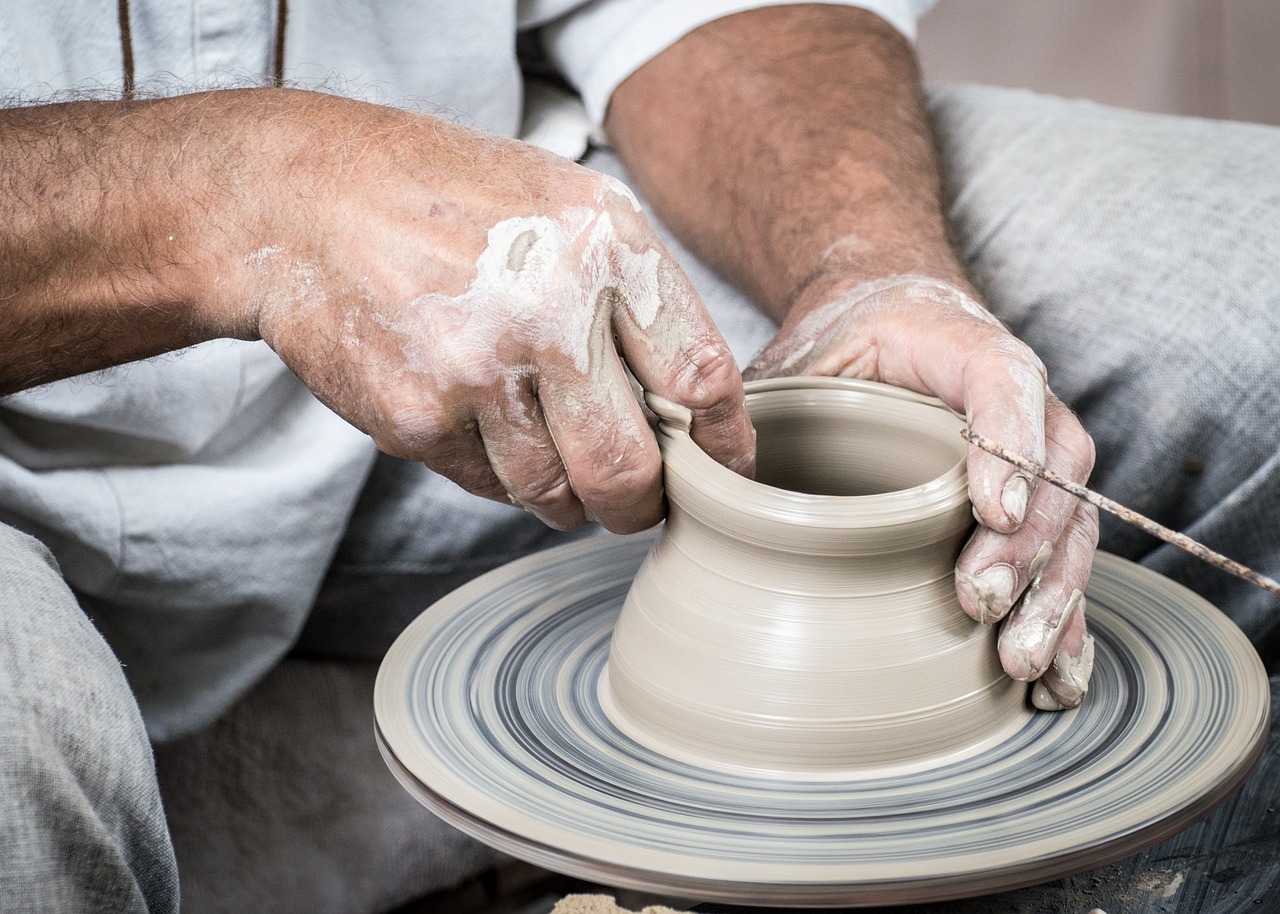
Coil Building
Coil building is a time-honored technique that has been used for centuries, allowing artisans to create larger and more complex ceramic forms. This method involves rolling out long, snake-like strips of clay and stacking them to build up the walls of a piece. It’s like constructing a tower out of clay, where each coil adds height and character to the final product. The beauty of coil building lies in its versatility; whether you’re crafting a simple bowl or an intricate vase, this technique can accommodate a wide range of artistic visions.
To begin coil building, you’ll want to start with a solid base. This could be a flat slab of clay or a pinch pot that serves as the foundation. Once your base is ready, you can start rolling out your coils. Aim for a consistent thickness—typically around half an inch—so that your piece maintains structural integrity. As you add each coil, gently press and blend the edges into the previous layer. This not only secures the coils together but also creates a smooth transition from one layer to the next.
One of the key aspects of coil building is patience. Unlike wheel throwing, which can be fast-paced, coil building is a slower, more meditative process. You’ll want to take your time to ensure that each coil is properly attached and shaped. As you work your way up, you can experiment with different shapes and designs. For instance, you might decide to flare the top of your vessel outward for a dramatic effect or create a more tapered silhouette for a subtle look.
After shaping, it's essential to let your piece dry slowly and evenly. Covering it with plastic can help prevent cracks during the drying process. Once it’s leather-hard, you can refine your piece by trimming excess clay and smoothing out any rough spots. This is also a great time to add decorative elements, such as textures or carvings, to enhance the overall design.
In terms of finishing touches, coil-built pieces can be glazed or left unglazed, depending on the desired effect. The choice of glaze can dramatically alter the appearance of your work, adding vibrant colors or a glossy finish that highlights the unique textures created by the coils. Ultimately, coil building is not just about creating functional ware; it’s an opportunity to express your creativity and individuality through the medium of clay.
So, whether you're a seasoned potter or a curious beginner, coil building opens up a world of possibilities. It invites you to explore, experiment, and, most importantly, enjoy the process of making something beautiful with your own two hands.
- What type of clay is best for coil building? Generally, earthenware or stoneware clays work well for coil building. They provide the right balance of workability and strength.
- How do I prevent cracking in my coil-built piece? To minimize cracking, ensure that your piece dries slowly and evenly. Cover it with plastic while it's drying to maintain moisture.
- Can I use coil building for large sculptures? Absolutely! Coil building is particularly effective for larger pieces, as it allows you to gradually build up height and complexity.
- Is coil building suitable for beginners? Yes! Coil building is a great introduction to ceramics because it doesn’t require the advanced skills needed for wheel throwing.
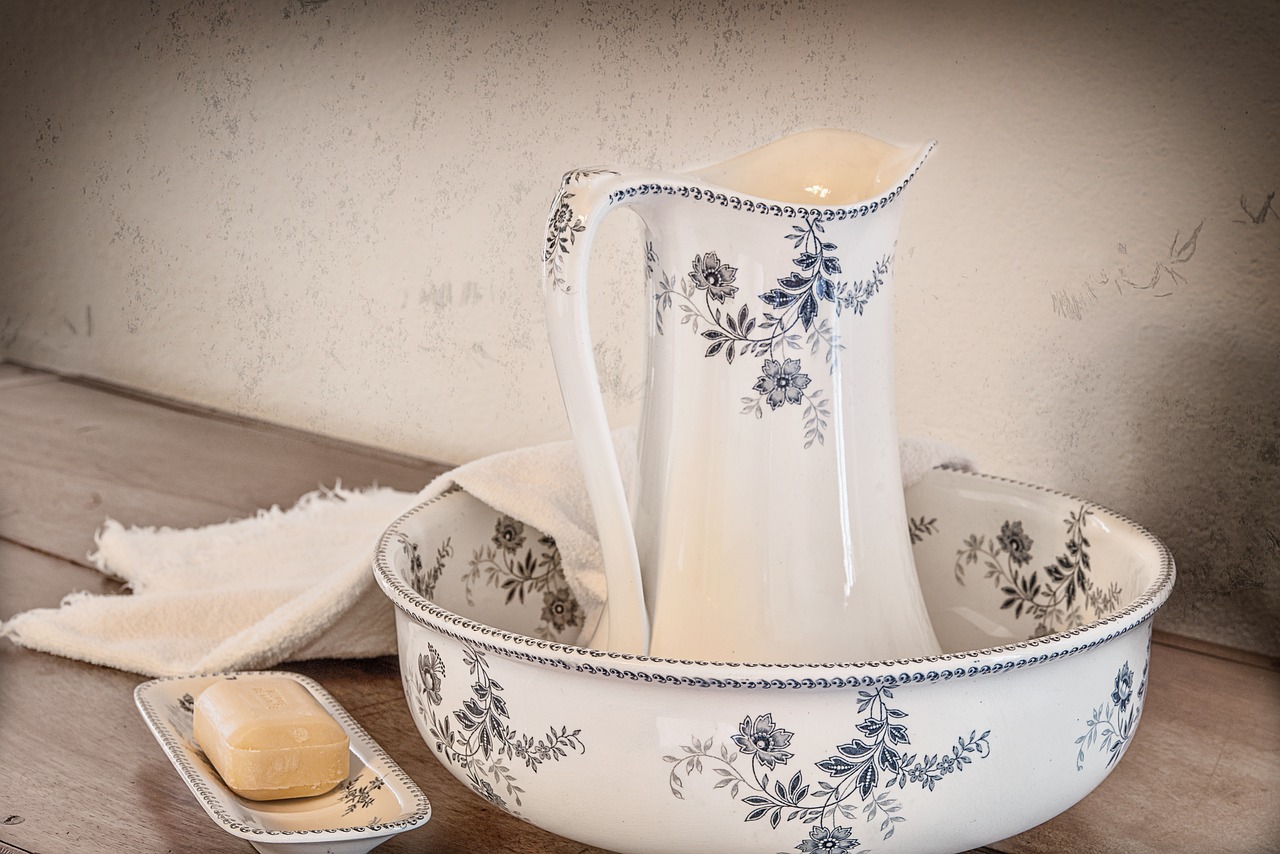
Wheel-Throwing Techniques
Wheel-throwing is one of the most captivating and dynamic methods of shaping ceramics. Imagine the thrill of centering a lump of clay on a spinning wheel, feeling it transform under your hands as you coax it into a beautiful vessel. This technique not only requires skill but also a deep understanding of the material and the tools involved. The potter's wheel spins, and with it, the possibilities seem endless!
To get started with wheel-throwing, one must first learn the fundamentals of centering the clay. This is arguably the most crucial step in the process. If the clay is not centered properly, it can lead to uneven walls and ultimately, a flawed piece. Centering involves applying pressure to the clay while the wheel spins, gradually forming it into a symmetrical shape. It's a bit like riding a bike; once you get the hang of it, it becomes second nature.
After centering, the next step is to open the clay. This is done by creating a well in the center of the clay, which will eventually become the interior of your pot. As you pull the walls upward, you’ll need to maintain even pressure and control to ensure the walls are uniform in thickness. The beauty of wheel-throwing lies in the tactile feedback; you can feel the clay's response to your hands, which helps in achieving the desired shape.
Once you’ve shaped your piece, the fun doesn’t stop there! You can create a variety of forms, from functional bowls and mugs to more artistic sculptural pieces. Each form presents its own challenges and requires different techniques. For instance, making a tall vase requires a different approach compared to crafting a wide bowl. The potter’s wheel allows for creativity, enabling you to experiment with different shapes and sizes.
Here are a few techniques commonly used in wheel-throwing:
- Pulling Up: This technique involves pulling the clay upwards to create height while maintaining its form.
- Shaping: After pulling the walls, shaping involves refining the form and adding details.
- Trimming: Once the piece has dried to a leather-hard state, trimming allows for the removal of excess clay and adding foot rings for stability.
To truly master wheel-throwing, practice is key. Many potters spend years honing their skills, learning how to manipulate the clay and the wheel to achieve their artistic vision. It’s a rewarding journey that combines patience, technique, and creativity. Whether you’re a beginner or an experienced potter, the thrill of creating something beautiful from a simple lump of clay is what keeps many coming back to the wheel.

Firing Processes
The firing process is a pivotal stage in the creation of ceramics, marking the transformation of soft, malleable clay into a sturdy, functional piece of art. This metamorphosis occurs through heat, which not only hardens the clay but also enhances its aesthetic qualities. There are primarily two types of firings that every ceramic artist should be familiar with: bisque firing and glaze firing. Each of these processes plays a distinct role in the final outcome of the ceramic piece, influencing its durability, appearance, and usability.
Bisque firing is the first firing that clay undergoes, typically occurring at a temperature between 1,600 to 1,830 degrees Fahrenheit (approximately 870 to 1,000 degrees Celsius). This initial firing is crucial as it hardens the clay, making it less fragile and preparing it for the glazing process. During this phase, the water in the clay evaporates, and the organic materials burn away, resulting in a porous, yet sturdy, ceramic body. This porosity is essential as it allows the subsequent glaze to adhere properly, ensuring a beautiful finish.
Following bisque firing, the next step is glaze firing. This process involves applying a layer of glaze to the bisque-fired piece and then firing it again at higher temperatures, usually between 1,830 to 2,400 degrees Fahrenheit (about 1,000 to 1,300 degrees Celsius). The glaze, which is a mixture of silica, flux, and other materials, melts during this firing, creating a glass-like surface that not only enhances the visual appeal but also adds a layer of protection to the clay. The interaction between the glaze and the clay body during this firing can lead to a wide array of textures and colors, making each piece unique.
To better understand these processes, consider the following table that summarizes the key differences between bisque and glaze firing:
| Firing Type | Temperature Range | Purpose | Outcome |
|---|---|---|---|
| Bisque Firing | 1,600 - 1,830 °F (870 - 1,000 °C) | Hardens clay, prepares for glazing | Porous ceramic body |
| Glaze Firing | 1,830 - 2,400 °F (1,000 - 1,300 °C) | Melts glaze, fuses it to the clay | Durable, colorful, glassy finish |
Understanding these firing processes is essential for any ceramic artist looking to master their craft. The choices made during firing can greatly affect the final product, from its strength to its visual appeal. As artists experiment with different clays and glazes, they will discover how various firing temperatures and atmospheres can lead to unexpected and delightful results. This exploration is part of what makes ceramics such a fascinating and rewarding art form.
1. What is the purpose of bisque firing?
Bisque firing serves to harden the clay, making it less fragile and preparing it for glazing. It also allows for the removal of moisture and organic materials from the clay.
2. How does glaze firing affect the final piece?
Glaze firing melts the glaze, creating a glassy surface that enhances the piece's aesthetic qualities and provides protection to the clay body.
3. Can I skip bisque firing?
While technically possible, skipping bisque firing is not recommended as it may result in poor glaze adhesion and a fragile final product.
4. What temperatures are used for firing ceramics?
Ceramics are typically bisque fired at temperatures ranging from 1,600 to 1,830 °F and glaze fired between 1,830 to 2,400 °F, depending on the materials used.
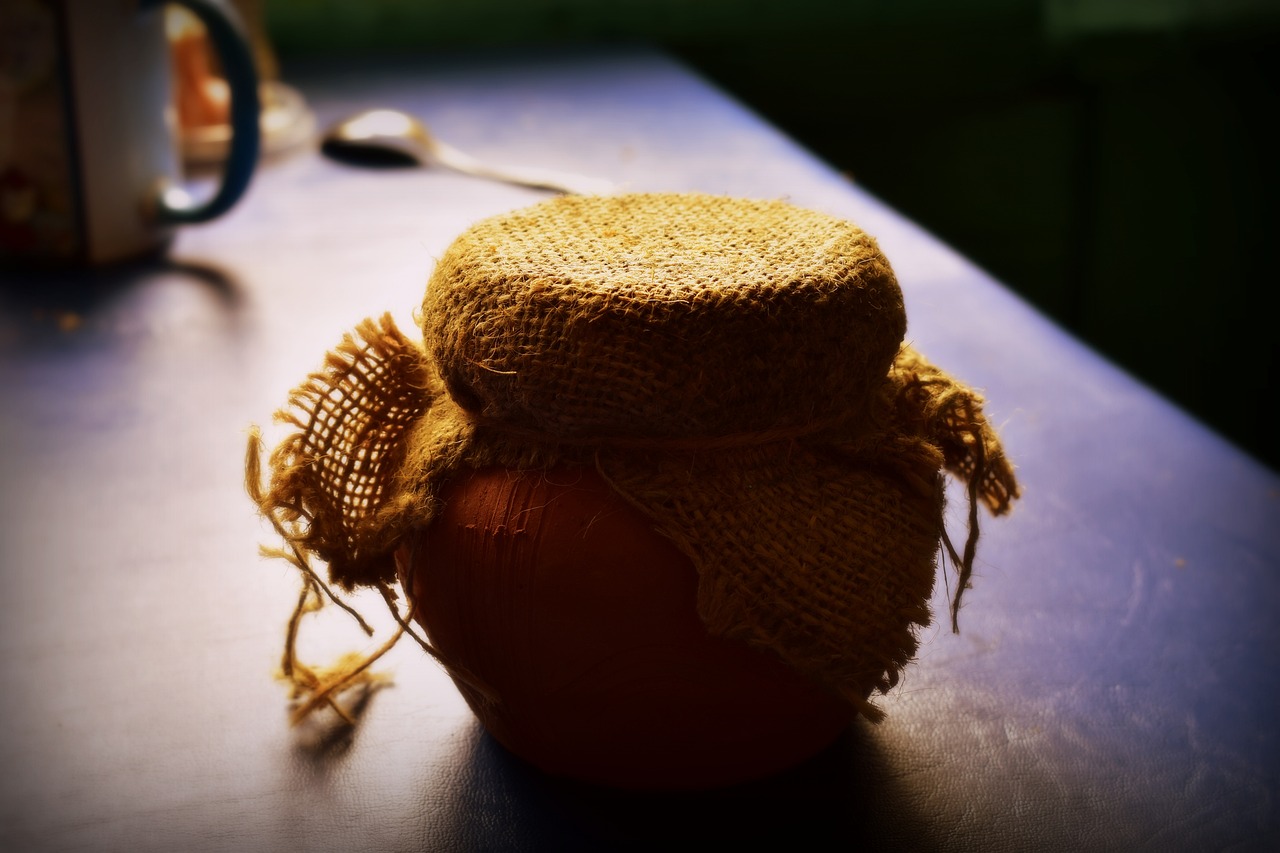
Bisque Firing
Bisque firing is a critical stage in the ceramic creation process, serving as the first firing that transforms raw clay into a hardened form. This initial firing is crucial as it prepares the clay body for glazing and further decorative processes. During bisque firing, the temperature typically reaches around 1,600°F to 1,830°F (870°C to 1,000°C), depending on the type of clay being used. This temperature range is essential for ensuring that the clay particles bond together effectively, resulting in a sturdy and durable piece.
One of the primary purposes of bisque firing is to remove any residual moisture from the clay. If this moisture remains during the glazing process, it can lead to unwanted cracks or defects in the final product. Moreover, bisque firing helps to enhance the porosity of the clay, allowing it to absorb glazes more effectively. This is why many potters consider bisque firing to be a foundational step in the ceramics journey.
During this stage, the atmosphere within the kiln can also significantly impact the outcome of the firing. Potters often choose between an oxidizing or reducing atmosphere, which can affect the final color and texture of the ceramic piece. For instance, in an oxidizing atmosphere, the colors tend to be brighter and more vibrant, while a reducing atmosphere can lead to deeper, more muted tones.
Here’s a quick overview of the bisque firing process:
| Step | Description |
|---|---|
| 1. Loading the Kiln | Carefully place the bisqueware in the kiln, ensuring enough space for air circulation. |
| 2. Setting the Temperature | Program the kiln to reach the desired bisque firing temperature. |
| 3. Firing Process | Allow the kiln to heat gradually to avoid thermal shock. |
| 4. Cooling | Once the firing is complete, let the kiln cool down slowly before opening it. |
After the bisque firing is complete, potters can inspect their work for any imperfections or defects. This stage is also an excellent opportunity to make any necessary adjustments before applying glazes. The bisqueware is now ready for the next exciting phase—glazing—where artisans can express their creativity through color and texture. Overall, bisque firing is not just a technical step; it's a transformative moment that lays the groundwork for the beauty and functionality of the final ceramic piece.
- What is the purpose of bisque firing? Bisque firing hardens the clay and prepares it for glazing by removing moisture and enhancing porosity.
- What temperature is bisque firing? The temperature typically ranges from 1,600°F to 1,830°F (870°C to 1,000°C).
- Can I skip bisque firing? Skipping bisque firing is not recommended, as it can lead to defects in the glazing process.
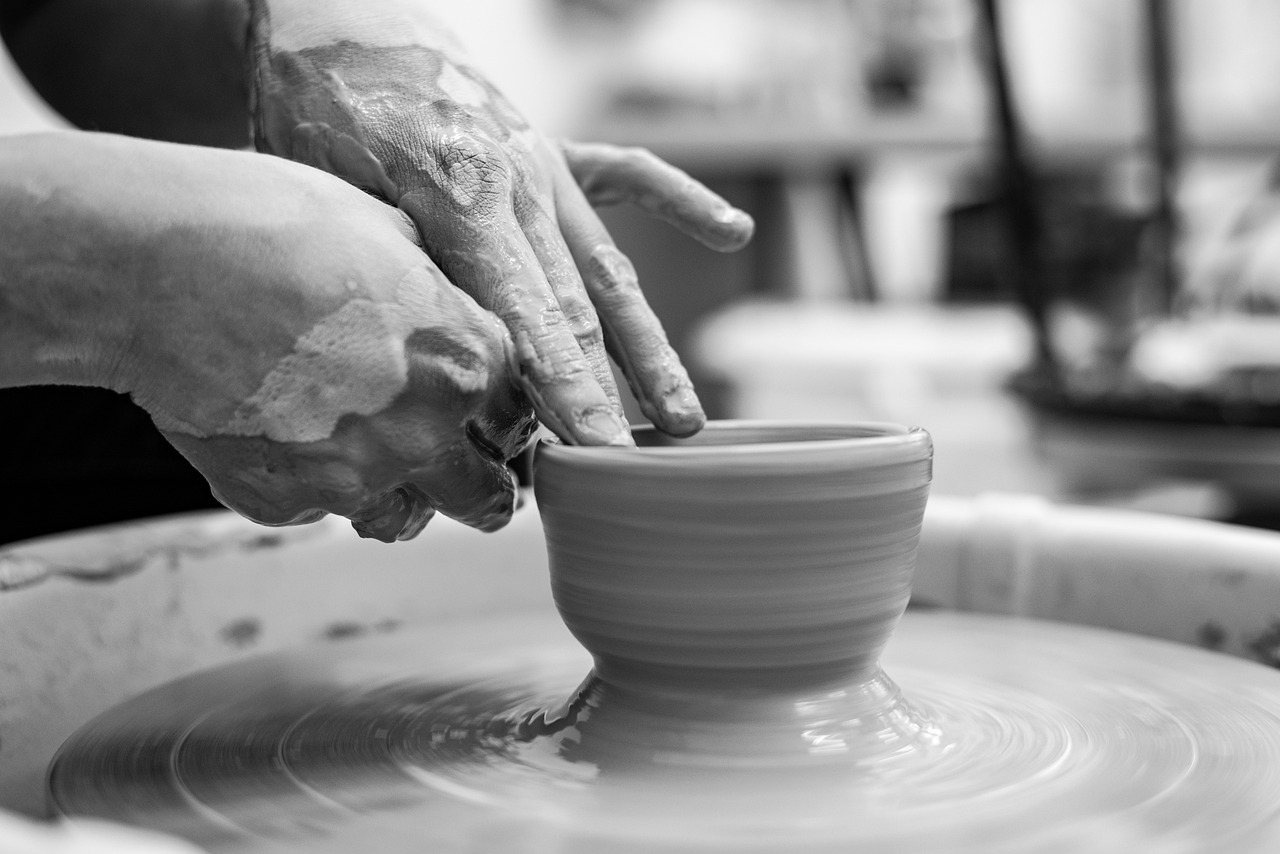
Glaze Firing
is an essential step in the ceramic-making process that breathes life into your creations. It’s the moment when your piece transforms from a dull, porous clay body into a vibrant, glossy work of art. But what exactly happens during this magical stage? Let’s dive deep into the intricacies of glaze firing and understand its significance in ceramics.
During glaze firing, the piece is subjected to high temperatures, typically ranging from 1820°F to 2340°F (1000°C to 1280°C), depending on the type of clay and glaze used. This intense heat causes the glaze to melt and fuse to the surface of the clay, creating a strong bond that enhances both the durability and aesthetics of the piece. Imagine it as a transformation—like turning a caterpillar into a butterfly, where the clay undergoes a metamorphosis, emerging as a beautiful, functional object.
There are several types of glazes, each offering unique effects and finishes. Some common types include:
- Glossy Glazes: These glazes provide a shiny, reflective surface that enhances colors and patterns.
- Matte Glazes: Offering a soft, non-reflective finish, matte glazes provide a more subtle appearance.
- Transparent Glazes: These glazes allow the underlying clay or decoration to show through, creating depth.
- Opaque Glazes: Opposite of transparent, opaque glazes completely cover the clay body, offering bold colors.
Before firing, it’s crucial to apply the glaze evenly. Uneven application can lead to drips, runs, or patches that can detract from the overall beauty of the piece. Many potters use techniques such as dipping, pouring, or spraying to achieve a smooth, even coat. Once the glaze is applied, the piece is loaded into a kiln for the firing process.
During the firing, the temperature is gradually increased. This slow ramp-up is vital because it allows the moisture in the glaze to evaporate without causing cracks or defects. After reaching the peak temperature, the kiln is allowed to cool down slowly. This cooling phase is just as important as the heating; rapid cooling can lead to thermal shock, causing the piece to crack or shatter. It’s like baking a cake—the temperature and timing are everything!
After the glaze firing is complete, the result is often nothing short of breathtaking. The colors can shift and change, sometimes revealing unexpected surprises. This unpredictability is part of what makes ceramics so exciting! Each piece is unique, with its own character and charm, thanks to the nuances of the glaze and firing process.
In summary, glaze firing is a crucial phase that not only enhances the beauty of ceramic pieces but also ensures their durability. By understanding the intricacies of this process, artists can push the boundaries of their creativity and produce stunning works that captivate the eye and touch the soul.
- What is the purpose of glaze firing? Glaze firing transforms raw clay into a durable, colorful piece by melting the glaze and bonding it to the clay surface.
- What temperature is used for glaze firing? The temperature typically ranges from 1820°F to 2340°F (1000°C to 1280°C), depending on the materials used.
- Can I glaze over a previously fired piece? Yes, you can apply glaze to a bisque-fired piece and then fire it again to achieve the desired finish.
- What happens if the glaze is applied unevenly? Uneven glaze application can lead to drips, runs, or patches that may detract from the piece's beauty.
- How can I avoid thermal shock during firing? A slow ramp-up and cool-down in the kiln can help prevent thermal shock, which can cause cracking or shattering.

Finishing Techniques
Once your ceramics have successfully completed the firing process, the journey is far from over. The you choose can drastically enhance the beauty and functionality of your pieces, transforming them from simple clay forms into stunning works of art. Think of this stage as the final brush strokes on a masterpiece; it’s where you can truly let your creativity shine. So, what are some of the most popular finishing techniques that ceramic artists employ?
First off, polishing is a technique often used to create a smooth and shiny surface on the ceramic piece. This can be achieved by using various tools, such as sandpaper or polishing pads, to gently buff the surface. The goal is to remove any rough spots or imperfections, resulting in a sleek finish that feels as good as it looks. Polishing is particularly important for functional items like plates and bowls, where a smoother surface can enhance the user experience.
Another essential technique is decorating. This is where the real fun begins! Artists can use a variety of methods to add personality and flair to their ceramics. Some popular decorating techniques include:
- Under-glazing: Applying colored slips before the final glaze, allowing for intricate designs.
- Over-glazing: Adding color after the initial firing, which is then sealed with another firing.
- Engobe: A colored clay slip that can be applied to the surface for texture and color.
Each of these techniques offers unique possibilities for expression. For instance, under-glazing allows for detailed designs, while over-glazing can create vibrant, glossy finishes. Engobe, on the other hand, can add both color and texture, giving the piece a more tactile quality.
Applying additional glazes is yet another finishing technique that can transform the aesthetic of your ceramics. Glazes come in a variety of colors and finishes, from matte to glossy, and can even produce special effects like crackle or iridescence. Choosing the right glaze is crucial, as it can alter the color and texture of your piece dramatically after firing. It’s like choosing the right outfit for a special occasion; the right glaze can elevate your piece from ordinary to extraordinary!
After you’ve applied your glazes and decorations, it’s time for the final firing. This stage is critical because it sets the glaze and finalizes the piece. The temperature and atmosphere in the kiln during this firing can affect the outcome significantly, so it’s important to monitor these factors closely. It’s truly a delicate dance between art and science!
In summary, finishing techniques in ceramics are vital for transforming raw clay into beautiful, functional art. Whether you’re polishing, decorating, or applying glazes, each step is an opportunity to express your creativity and enhance the final product. Remember, the finishing touches can make all the difference, so don’t rush through this exciting part of the process!
1. What are the most common finishing techniques used in ceramics?
Common finishing techniques include polishing, decorating (under-glazing, over-glazing, and engobe), and applying additional glazes. Each technique can significantly enhance the appearance and functionality of the ceramic piece.
2. Why is polishing important in ceramics?
Polishing creates a smooth surface on the ceramic piece, removing imperfections and enhancing the tactile experience, which is especially important for functional items.
3. How does glazing affect ceramics?
Glazing not only adds color but also creates a protective layer on the ceramic surface. Different glazes can produce various effects, such as glossiness or texture, and can dramatically change the final look of the piece.
4. Can I decorate my ceramics after the first firing?
Yes! This is known as over-glazing, where you can add color and designs after the initial firing before applying a final glaze and firing again.
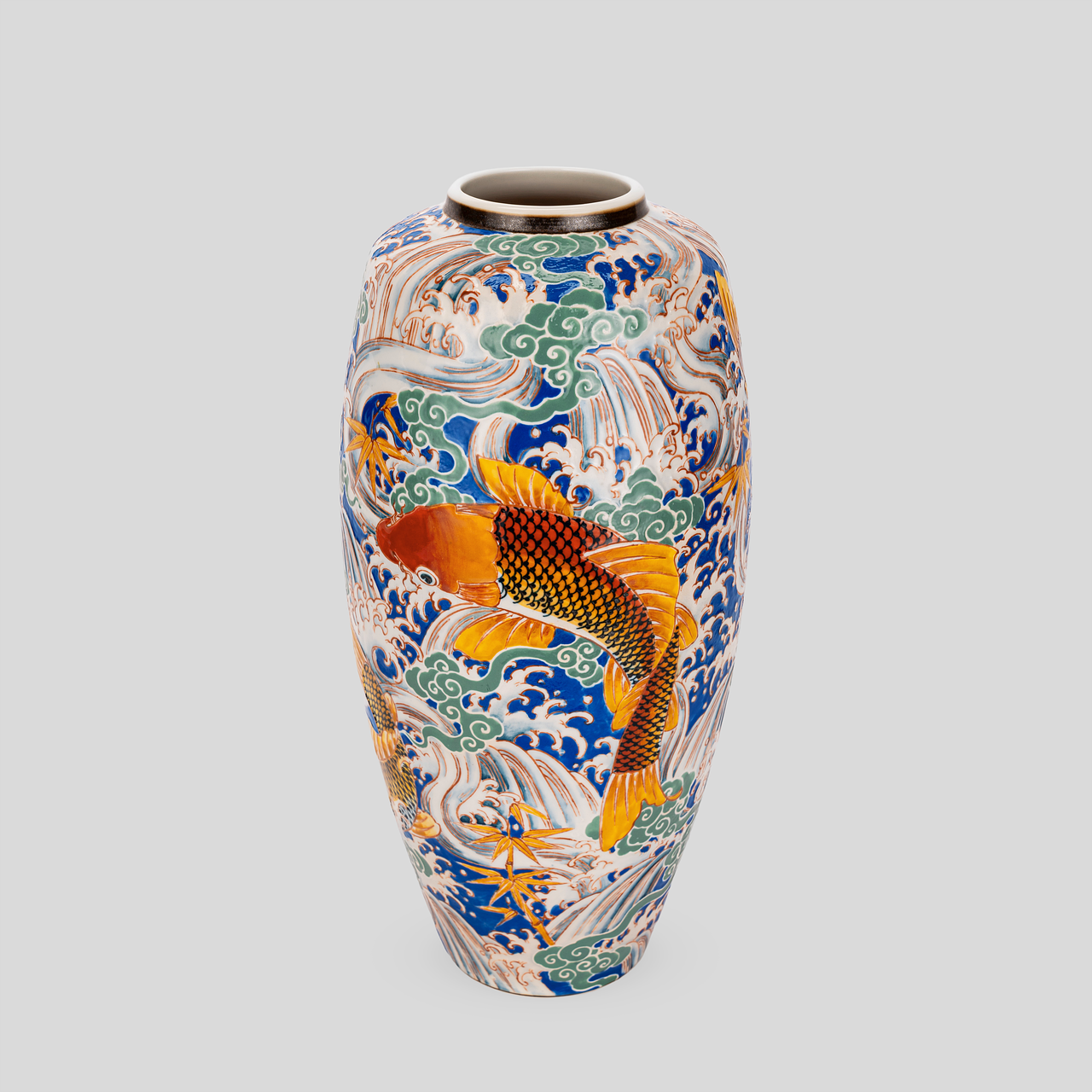
Common Challenges in Ceramics
Creating ceramics can be a thrilling journey, but it’s not without its hurdles. Just like any art form, potters and ceramicists face a variety of challenges that can make or break their creations. One common issue is cracking, which often occurs during drying or firing. Imagine spending hours crafting a beautiful piece, only to see it develop unsightly cracks! This can happen due to uneven drying, too much tension in the clay, or even rapid temperature changes during firing. To mitigate this, it’s crucial to ensure that the clay is evenly moistened and to control the drying process. A slow, gradual drying can save many a masterpiece from the dreaded crack.
Another challenge is warping, which can occur when the clay is not properly centered on the potter's wheel or if uneven pressure is applied during shaping. Warping can lead to asymmetrical pieces that might not fit well with other items in a set. To avoid this, potters should focus on centering the clay effectively and maintaining consistent pressure throughout the shaping process. It’s all about balance and precision!
Glazing can also be a tricky aspect of ceramics. Many artists have faced the disappointment of a glaze not turning out as expected. This could be due to a variety of factors, including improper application, incompatible glazes, or incorrect firing temperatures. For instance, if a glaze is applied too thickly, it may run off the piece during firing, resulting in a mess rather than a masterpiece. Therefore, understanding the properties of different glazes and how they interact with each other is essential. Experimentation is key!
Here’s a quick overview of some common challenges and their potential solutions:
| Challenge | Potential Solutions |
|---|---|
| Cracking | Evenly moisten clay; control drying time. |
| Warping | Center clay properly; apply consistent pressure. |
| Glazing Issues | Understand glaze properties; experiment with application. |
In addition to these challenges, potters may also encounter issues with the clay itself, such as air bubbles that can cause defects during firing. Always remember to wedge your clay thoroughly to remove any trapped air. Furthermore, there’s the potential for uneven firing, which can lead to color variations and inconsistent finishes. Regularly checking the kiln’s calibration and experimenting with different firing schedules can help achieve more consistent results.
Ultimately, while these challenges can be frustrating, they also present opportunities for learning and growth. Each setback can teach valuable lessons that refine skills and enhance creativity. So, whether you’re a novice or a seasoned pro, embracing these challenges can lead to even more rewarding experiences in the world of ceramics!
- What is the most common problem faced by ceramic artists? Cracking is one of the most frequent issues, often due to uneven drying or firing.
- How can I prevent my ceramics from warping? Focus on centering your clay properly and applying consistent pressure while shaping.
- Why does my glaze not turn out as expected? This could be due to various factors like improper application, incompatible glazes, or incorrect firing temperatures.
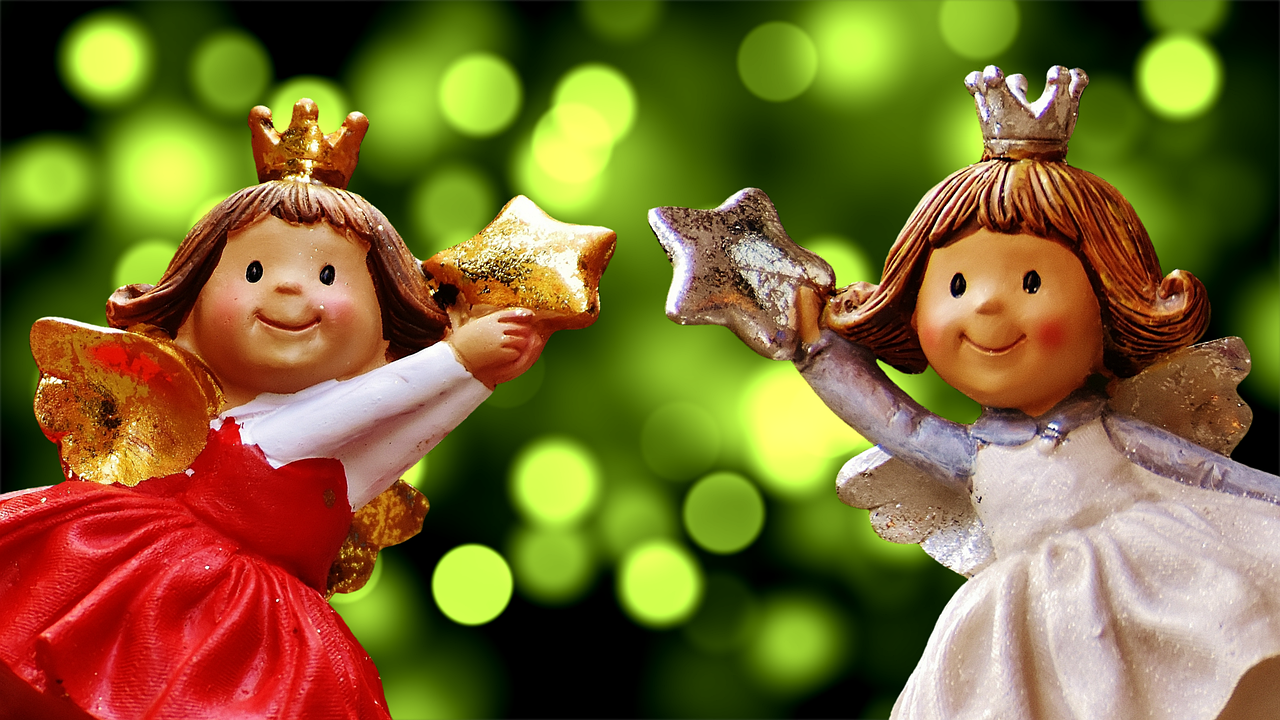
Exploring Ceramic Art Forms
Ceramics is a captivating blend of functionality and artistry, transcending mere utility to become a profound expression of culture and creativity. When we think of ceramics, we often picture everyday items like plates and mugs, but the world of ceramics is rich with diversity, showcasing an array of artistic styles that can astonish and inspire. From intricate sculptures to ornate pottery, the possibilities within this medium are virtually limitless.
At its core, ceramic art can be categorized into several forms, each with its unique characteristics and purposes. Some of the most prominent forms include:
- Functional Pottery: This includes items designed for everyday use, such as dinnerware, bowls, and vases. Artists often prioritize both aesthetics and practicality, ensuring that these pieces are not only beautiful but also serve a purpose in daily life.
- Sculptural Ceramics: Sculptors use clay to create three-dimensional art pieces that may or may not serve a function. These works can range from abstract forms to realistic representations, pushing the boundaries of what ceramics can achieve.
- Decorative Ceramics: Often created for display rather than use, these pieces include intricate tiles, wall art, and ornamental objects. They allow artists to explore colors, textures, and patterns in ways that captivate the viewer's imagination.
Each of these forms presents unique challenges and opportunities for artists. For example, functional pottery often requires a deep understanding of glaze chemistry and firing temperatures to ensure durability, while sculptural ceramics may focus more on form and texture, allowing for a broader range of artistic expression.
Moreover, the cultural significance of ceramics cannot be overlooked. Different cultures have their own traditional styles and techniques, which influence modern ceramic art. For instance, Japanese Raku pottery emphasizes spontaneity and natural beauty, while Italian Majolica is known for its vibrant colors and intricate designs. These cultural influences enrich the ceramic landscape, providing artists with a wealth of inspiration.
As we delve deeper into the world of ceramics, it's essential to recognize the role of contemporary artists who are redefining the medium. With innovative techniques such as 3D printing and mixed media, these artists are blending traditional practices with modern technology, creating pieces that challenge our perceptions of what ceramics can be. This fusion of old and new not only enhances the aesthetic appeal of ceramic art but also opens up new avenues for expression.
In conclusion, exploring ceramic art forms reveals a dynamic interplay between functionality and artistic expression. Whether through the creation of everyday items or breathtaking sculptures, ceramic artists continue to push boundaries, inviting us to appreciate the beauty of this ancient craft in new and exciting ways. As we witness the evolution of ceramics, it becomes clear that this art form will remain a vital part of our cultural heritage, continually inspiring future generations.
Q: What are the main types of ceramic art?
A: The main types include functional pottery, sculptural ceramics, and decorative ceramics, each serving different purposes and showcasing unique artistic styles.
Q: How does culture influence ceramic art?
A: Different cultures have distinct traditional styles and techniques that inform modern ceramic art, providing artists with inspiration and context for their work.
Q: What are some modern techniques used in ceramics?
A: Contemporary artists often use techniques such as 3D printing, mixed media, and innovative glazing methods to create unique ceramic pieces that challenge traditional norms.
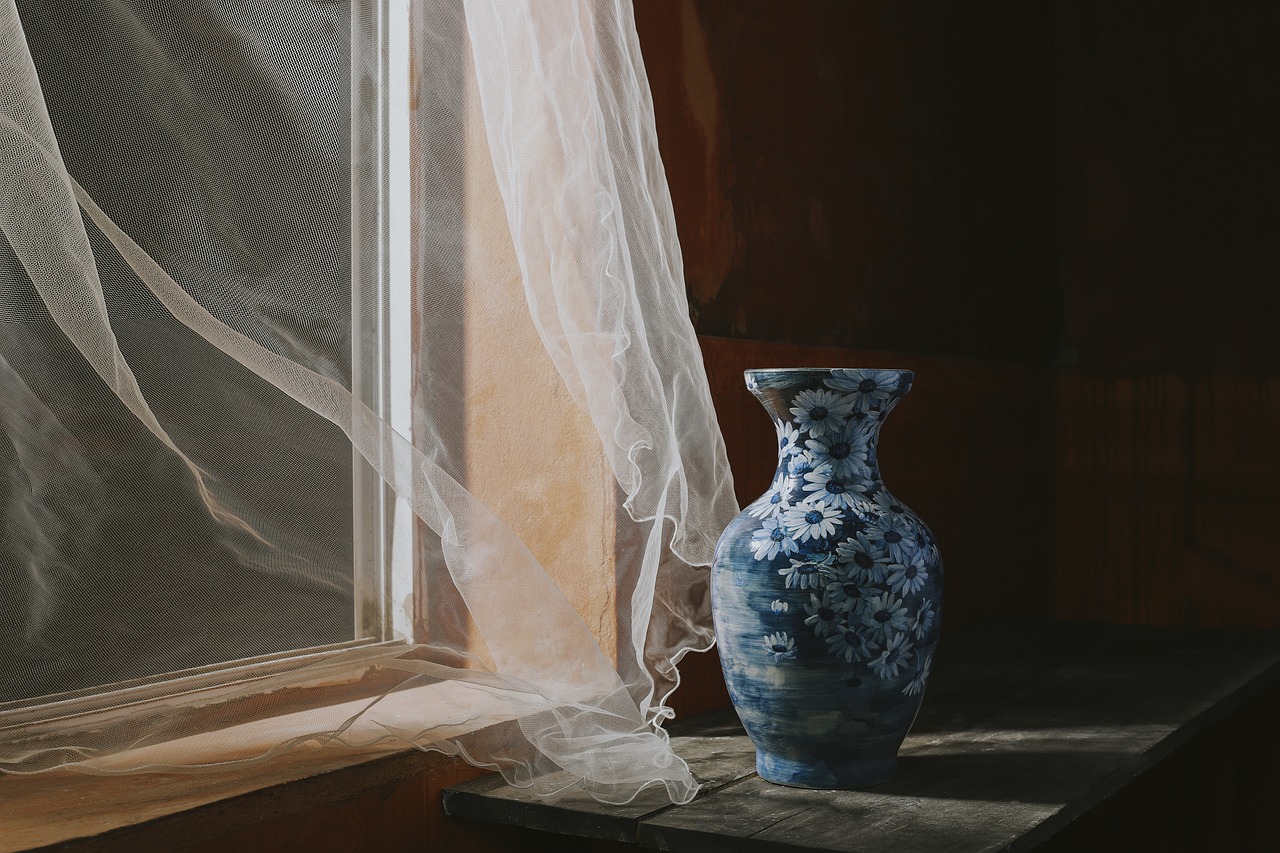
The Future of Ceramics
This article explores the intricate journey of creating ceramics, detailing each step from raw materials to the final product, and the techniques involved in this ancient art form.
The foundation of ceramics lies in its raw materials. This section discusses the types of clay, additives, and minerals used, highlighting their importance in determining the quality and characteristics of the final product.
Shaping ceramics involves various techniques such as hand-building, wheel-throwing, and molding. Each method offers unique possibilities and challenges, influencing the aesthetics and functionality of the ceramic piece.
Hand-building is a versatile technique that allows for creativity and individuality. This part covers pinch pots, coil building, and slab construction, showcasing how artisans create unique forms by hand.
Pinch pots are simple yet effective, allowing beginners to explore ceramic shaping. This section describes the process and techniques to create functional and decorative pinch pots.
Coil building is a traditional method that enables the creation of larger and more complex forms. This section explains the steps involved and tips for achieving successful results.
Wheel-throwing is a dynamic and skillful method used by many potters. This part delves into the basics of using a potter's wheel, including centering clay and shaping vessels.
Firing is a crucial step in ceramic production, transforming raw clay into durable pottery. This section explains the different firing techniques, including bisque and glaze firing, and their impact on the final piece.
Bisque firing is the initial firing that hardens the clay. This subsection discusses the importance of this stage and how it prepares ceramics for glazing.
Glaze firing adds color and a glassy finish to ceramics. This part explains the glazing process, types of glazes, and how firing affects the appearance and texture.
After firing, ceramics often require finishing touches. This section covers various techniques such as polishing, decorating, and applying additional glazes to enhance the beauty and functionality of the pieces.
Creating ceramics comes with its own set of challenges. This part discusses common issues like cracking, warping, and glazing problems, along with tips for troubleshooting and improving techniques.
Ceramics is not just functional; it’s also an art form. This section explores various artistic styles, including sculpture, pottery, and decorative ceramics, showcasing the diversity in ceramic art.
The future of ceramics is an exciting landscape filled with innovation and creativity. As technology continues to advance, ceramic artists are embracing new materials and methods that were once unimaginable. For instance, the integration of 3D printing technology is revolutionizing how artists approach design and production. This method allows for intricate and complex shapes that traditional techniques may struggle to achieve, opening up a whole new realm of possibilities.
Moreover, sustainability is becoming a key focus in the ceramics industry. Many artists are now sourcing eco-friendly materials and developing methods that minimize waste. This shift not only addresses environmental concerns but also resonates with a growing audience that values sustainable practices. Artists are experimenting with recycled materials, such as crushed glass and reclaimed clay, to create unique and environmentally conscious pieces.
In addition to these technological advancements, digital tools are enhancing the creative process. Software programs that allow for virtual modeling enable artists to visualize their work before it’s even made. This can lead to more refined and thoughtful designs, as well as a reduction in material waste during production.
As we look ahead, the fusion of traditional techniques with modern technology is likely to shape the future of ceramics. Artists will continue to push boundaries, exploring new forms, textures, and finishes that challenge the status quo. The ceramic community is vibrant and adaptive, ensuring that this ancient craft remains relevant and exciting in the contemporary art scene.
In summary, the future of ceramics is bright, characterized by innovation, sustainability, and a blend of the old with the new, promising a rich tapestry of artistic expression for generations to come.
- What are the main types of clay used in ceramics? There are several types of clay, including earthenware, stoneware, and porcelain, each with unique properties suited for different applications.
- Can I use any type of clay for hand-building? Yes, while some clays are better suited for specific techniques, most hand-building methods can be used with various types of clay.
- What is the difference between bisque firing and glaze firing? Bisque firing hardens the clay to prepare it for glazing, while glaze firing melts the glaze, creating a glassy surface.
- How can I prevent cracking in my ceramic pieces? To prevent cracking, ensure even drying, avoid overly thick sections, and control the temperature during firing.
Frequently Asked Questions
- What types of clay are used in ceramics?
There are several types of clay used in ceramics, including earthenware, stoneware, and porcelain. Each type has its own unique properties and is suited for different applications. Earthenware is often used for decorative pieces, while stoneware is known for its durability and functionality. Porcelain, on the other hand, is prized for its fine quality and translucence.
- What is the difference between hand-building and wheel-throwing?
Hand-building is a technique where the artist shapes the clay using their hands and simple tools, allowing for a lot of creativity and individuality. Wheel-throwing, however, involves using a potter's wheel to shape the clay, which requires skill and practice to master. Both methods can produce beautiful and unique pieces, but they offer different experiences and results.
- What are pinch pots and how are they made?
Pinch pots are one of the simplest forms of hand-built ceramics. To create them, you start with a ball of clay and use your fingers to pinch and shape it into a bowl or other form. This technique is great for beginners as it allows for experimentation and creativity without the need for advanced tools.
- What is bisque firing and why is it important?
Bisque firing is the first firing of the clay, which transforms it from a soft material into a hard, porous state. This process is crucial because it prepares the ceramic piece for glazing, allowing the glaze to adhere properly during the subsequent glaze firing. Without bisque firing, the glaze may not adhere well, leading to poor results.
- How does glaze firing differ from bisque firing?
Glaze firing occurs after bisque firing and is the process that melts the glaze to create a glass-like finish on the ceramic piece. This firing can enhance the color and texture of the glaze, making the piece both functional and aesthetically pleasing. The temperatures and duration of glaze firing can vary depending on the type of glaze used.
- What are some common challenges faced in ceramics?
Common challenges in ceramics include issues like cracking, warping, and glazing problems. Cracking can occur due to uneven drying or rapid temperature changes, while warping often happens if the piece is not properly supported during firing. Glazing problems can arise from improper application or incompatible materials. Understanding these challenges can help potters troubleshoot and improve their techniques.
- What artistic styles can be explored in ceramics?
Ceramics is a versatile medium that encompasses various artistic styles, including functional pottery, decorative ceramics, and sculptural pieces. Artists can explore different techniques and aesthetics, creating everything from simple bowls to intricate sculptures. This diversity allows for a wide range of expression and creativity in the world of ceramics.
- How is technology influencing the future of ceramics?
Technology is playing a significant role in the evolution of ceramics, with innovations such as 3D printing and advanced glazing techniques. These advancements are allowing artists to experiment with new forms and materials, pushing the boundaries of traditional ceramic practices. As technology continues to advance, the possibilities for ceramic art are expanding, making it an exciting field to explore.



















